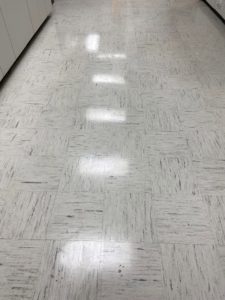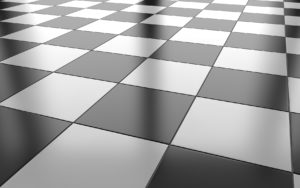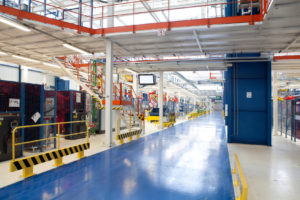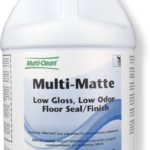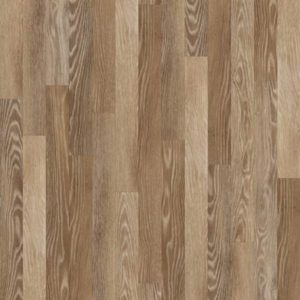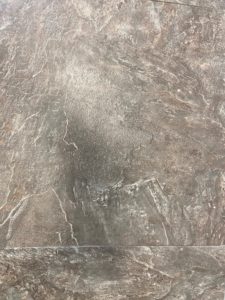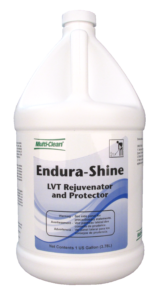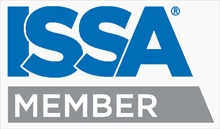What type of flooring do I have and how do I take care of it?
Sometimes we run into flooring that we cannot easily identify. This post discusses resilient flooring types and recommended maintenance for commonly used surfaces past and present.
Old Flooring Types: These surfaces are no longer used, but can still be found in old buildings.
Asphalt Tile: This tile can be spotted because it is was commonly a 9×9 inch tile. However, it was also available in a 12×12 inch style. It was used in construction through the 1940- 1960’s and was common in schools. Tiles were often dark brown and gray color patterns due to the presence of brown/black colored asphalt in the tile. This flooring contained asbestos, so was banned from use many years ago. The black mastic used to glue the tiles to the surface also contained asbestos.
You can see some images of Asphalt Tile by Clicking HERE: images of asphalt tile flooring – Google Search
Vinyl Asbestos Tile (VAT): These tiles were the more commonly recognized 12×12 inch tiles, but there use was discontinued in 1980 due to the federal ban on asbestos. These tiles look indistinguishable from today’s Vinyl Composition Tile (VCT). To determine if it is VAT, ask questions about the age of the flooring. If the flooring is believed to be installed prior to 1980, it is most likely VAT.
What do I do if I have VAT tile or Asphalt Tile
OSHA has offered guidance on what to do with flooring that contains asbestos. In most cases, for floors that don’t exhibit cracking or crumbling/friable surfaces, the recommendation is to seal the floor and never “dry” strip floors.
The post with link below deals with recommendations on safely maintaining tile floors that contain asbestos:
https://www.multi-clean.com/wp-content/uploads/2015/04/Aspestosflooring.pdf
Today’s Flooring
There are an increasing number of flooring types used in commercial environments, many of which have specific maintenance requirements. Knowing these flooring types and the associated care and maintenance is important.
Vinyl Composition Tile (VCT)
Description: Tiles usually 12×12 inches made from vinyl resin and mineral fillers. VCT is still commonly used in commercial, retail and schools and other government facilities. VCT tiles replaced the old VAT tiles and look the same.
Recommended Maintenance: This type of flooring requires a floor finish to protect and maintain slip resistance. Depending on the situation, the flooring may require buffing or burnishing. In addition, regular maintenance includes dust mopping, cleaning, re-coating and stripping.
TIP: Remember, if flooring is expected to have been installed before 1980, it is probably VAT tile, so plan accordingly.
Solid Vinyl and Sheet Vinyl
Description: This type of flooring is made with similar vinyl resins that are used in VCT, but without the high level of mineral fillers. The result is a premium, less porous flooring that is more resilient/flexible than VCT. This type of flooring is significantly more expensive than VCT.
Recommended Maintenance: Protect surface with a acrylic floor finish for best results.
Sheet Vinyl NO WAX FLOORING:
Description: This is a sheet vinyl flooring that is factory coated with a highly durable finish. This type of flooring dubbed “no wax flooring” is sold as a low maintenance surface for residential and commercial applications. In commercial applications, the wear and tear proved there was really no such thing as “no wax”, as even the tough protection applied to these surfaces could be scratched, gouged and became discolored with time.
Recommended Maintenance:
TIP: For surfaces that have become scratched or dulled, a floor finish can be applied to these surfaces to restore shine and cleanability.
Linoleum:
Description: Often confused with sheet vinyl, linoleum has been around a long, long time. It was the precursor to sheet vinyl. Linoleum has made a come back in recent years because of it’s sustainability aspects as well as its overall durability.
Recommended Maintenance: A problem with linoleum is that it is sensitive to many modern caustic floor strippers. These strippers will damage linoleum. The surface itself is highly durable and it is common to apply a low gloss or matte finish to these types of floors.
TIP: For stripping old finish off linoleum, use a stripper with a lower pH that does not contain caustics. These types of strippers will have a pH before dilution no higher than 10.5. Multi-Clean makes Ultra Stripper for removing old finishes and Multi-Matte low gloss floor finish for linoleum floors.
Luxury Vinyl Tile (LVT)
Description: The successor to NO WAX FLOORING is now referred to as Luxury Vinyl Tile or LVT. It is the fastest growing commercial surface being installed in new construction and remodels.
The surfaces can be made to look like real wood (with 3 dimensional texturing), natural stone, and other high end surfaces.
The surfaces are protected with an advanced coating system, so finish/sealers are considered optional. Note these coatings are superior to the old “no wax floor coatings” but still are subject to gouging and scratching. The textured 3 dimensional surface also is more challenging to clean.
Where do you find LVT in Commercial Applications?
Healthcare, hospitals, nursing homes, senior care, assisted living.
Education: Schools and Universities
Class A Office Space
Lower traffic retail.
Recommended Maintenance: Dust mop and wet clean daily. A neutral cleaner is typically recommended. Automatic scrubbing is preferred over damp mopping if possible.
TIP: If scrubbing textured floors, a brush does a better job than a pad and removing stubborn soils. Use a stronger all purpose cleaner instead of a neutral floor cleaner to remove embedded dirt.
Options for LVT Flooring: LVT is gaining popularity due to its ability to mimic natural surfaces and create a high end appearance. It is also desired because it is sold as a low maintenance floor that does not require regular floor finish/re-coating/stripping. But buyer beware, the LVT surfaces can scratch and gouge, so it makes sense to try to
protect the surface without getting into a full blown floor care program. Multi-Clean offers Endura-Shine as a means to protect and enhance slip resistance. Endura-Shine is UL approved as to slip resistance. Endura-Shine is coupled with Zyme-X, a stronger cleaner for removing soils on textured surfaces, but still safe on LVT Floors.
More Information on Endura-Shine for LVT Flooring
Rubber Flooring: The description encompasses many types of flooring and styles. Rubber offers cushioning, durability and low maintenance. Styles and designs are somewhat limited but more options are becoming available.
Raised Disc, Embossed or Stud Rubber: Used often for stair treads but can also be found in high traffic hallways/corridors where extra slip resistance might be needed.
Rubber flooring is very durable. Wear and tear can make the flooring look dull in traffic lanes. the rectangular, square, circular or angled raised studs definitely create some cleaning challenges. If not properly maintained, the base of the studs can be collection points for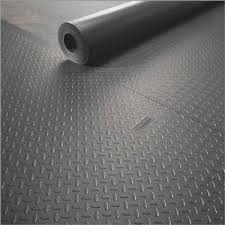 soils that are difficult to remove.
soils that are difficult to remove.
Suggested Maintenance: Manufacturers will typically recommend daily cleaning and regular low speed buffing with a soft brush to restore luster. Floor finishes and sealers are never recommended for use on this type of flooring. Using a rejuvenator (sometimes referred to as a “dressing”) can help bring back the shine and make the flooring easier to clean.
Rubber Gym Floors
Description: Rubber flooring can be a good, lower cost alternative to wood gym floors. Rubber flooring used for gym floors is usually different in composition to that found in athletic areas i.e. fitness areas, weight lifting, yoga studios, etc.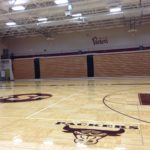
Recommended Maintenance: Rubber gym floors need to be dust mopped and regularly cleaned to maintain a high traction surface. Sometimes these floors can take unsightly scuffs or shoe marks. One way to reduce scuffing and marking is to use a rejuvenator and protector that leaves a very thin protective film on the surface. These products don’t build up like regular finishes and sealers.
Regular finishes can sometimes be used, usually these are urethane fortified finishes that offer toughness and resiliency. As mentioned above, these finishes will eventually need to be stripped.
TIP: Endura-Shine provides a very thin protective film that can be used on synthetic gym floors to protect floors from scuffing and marking. Just clean the surface, diluted Endura-Shine up to 1 part to 8 parts water and mop on a thin coat.
Other Rubber Based Surfaces:
Rubber flooring can be found in sheet or large tile form. While not as widely used, typical maintenance usually involves regular cleaning and dust mopping.
Rubber, particularly re-cycled rubber surfaces can be used for athletic surfaces, running tracks, play areas and much more. These surfaces are usually thicker and softer to provide a more noticeable cushioning to surfaces.
For more information on maintenance and care of resilient flooring surfaces, please visit Multi-Clean’s floor care webpage


